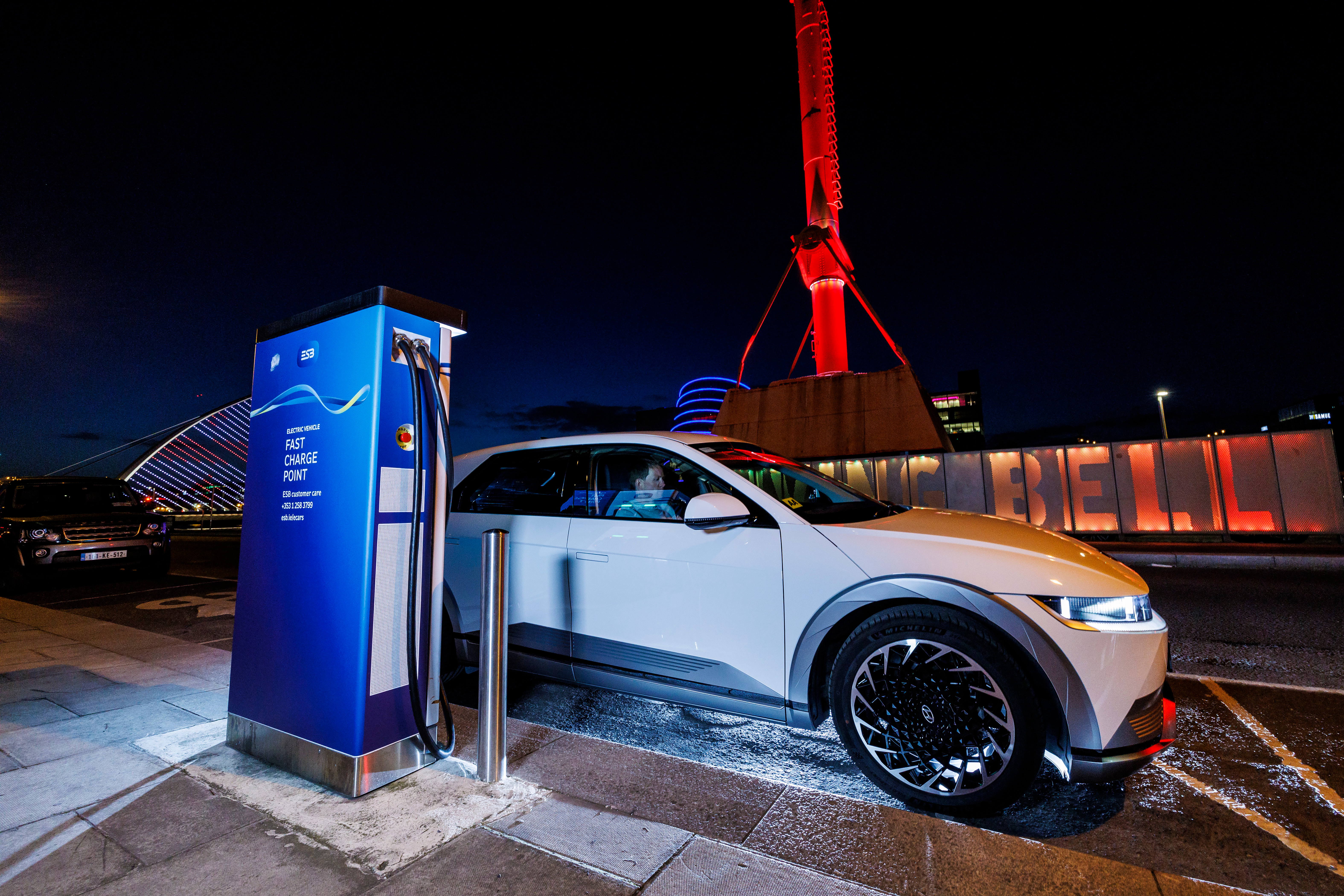For an ever-growing number of people in Ireland, cities are where we live, work and play. Yet urban areas are also responsible for a huge proportion of global carbon emissions – over two-thirds, by some calculations. To achieve our climate targets, we will need to rethink how our cities run day-to-day.
One of the most powerful tools we have to tackle this challenge is electrification. By switching from oil and gas to renewable electricity, cities can cut carbon, make the air cleaner, and become all-round healthier and nicer places to live.
Enabling electrification for homes, businesses, transport and infrastructure is a major focus of our work across ESB, as part of our drive to empower customers and communities on their own net zero journeys. This article takes a look at some of the ways we are helping make tomorrow’s all-electric cities a reality.
Making EVs easy and accessible
One area where electrification is having a transformative impact on cities’ carbon emissions is transportation. For short-hop urban driving, electric vehicles (EVs) are a natural fit. But with many city dwellers not having their own driveway to install a charger, public EV charging is vital. ESB ecars is playing a key role in building out this infrastructure, with over 1,600 charging points now installed across the island of Ireland.
We are also helping electrify public transport in our towns and cities. In Athlone, ESB's Smart Energy Services (SES) business planned and constructed Ireland’s first fully electric bus depot. It allows as many as 18 electric buses to charge at the same time, deploying a smart energy management system for greater efficiency.
Beyond simply swapping petrol cars for EVs, rethinking urban transport is about imagining whole new ways of getting from A to B. Shared mobility is one such avenue being explored by ESB’s innovation team, which has been partnering with industry and research to roll out e-mobility hubs or ‘eHubs’ across a number of city and town locations. Stop into an eHub, and you can access shared EVs, e-bikes or e-cargo bikes, and rent them right from your phone. In the future, sites like these may even be able to support the electricity grid through vehicle-to-grid technology.

Photo: ESB ecars chargers offer fast urban charging at locations across Irish towns and cities.
Building smarter
Research has shown that buildings account for around 60% of emissions in cities, mainly due to heating and cooling. By pairing electrification with greater energy efficiency, however, buildings are being transformed from simply consuming energy to generating, storing and sharing it.
New-builds today are usually equipped with electric heat pumps and airtight insulation. But the housing stock in cities has evolved over centuries, and making older homes energy-efficient can entail a range of upgrades to the fabric of the house, up to and including deep retrofits. These renovations are the focus of Electric Ireland Superhomes, ESB’s joint venture with Tipperary Energy Agency. This one-stop-shop offers everything needed to create a low-carbon, all-electric home – from heat pumps and advanced insulation, to rooftop solar PV and batteries that allow households to generate and store their own electricity.
Of course many of the buildings in cities are offices and commercial premises. Electrification and energy efficiency measures can unlock great opportunities here too. Companies and public sector organisations have enlisted the support of ESB's Smart Energy Services to tap into this potential. The business delivered a rooftop solar PV installation for the Pavilions Shopping Centre in the Dublin suburb of Swords, for example, lowering the site’s carbon footprint and reducing energy costs.
Our own head office in the centre of Dublin offers a glimpse of what’s possible for sustainable commercial property. It is the first large fossil-fuel-free office building in the country, using near-zero energy thanks to a combination of a combination of geothermal energy, solar PV panels and electric heat pumps.

Photo: ESB's Fitzwilliam 27 office shows the potential of electrification and microgeneration for commercial city buildings.
The digital, data-driven grid
Underpinning the electrification of our cities is an energy grid that is robust, resilient and increasingly digital and data-driven. To enable a net-zero Ireland by 2050, ESB Networks is working to ensure a net-zero ready electricity distribution network by 2040. As part of the next Price Review 6 (PR6) period set to run from 2026 to 2030, a proposed investment of more than €13 billion is planned across the network in urban and rural communities throughout the country. This will help expand and future-proof the physical infrastructure needed to support the huge growth in demand due to the electrification of heat and transport.
Electrified cities will also require a new kind of flexibility to be accommodated on the network. In a system powered by variable renewables, where energy generation is ever more decentralised, network operators will use smart solutions to forecast demand, manage energy use in real time, and help customers become active participants in the electricity market. ESB Networks has been working on such initiatives like the National Network, Local Connections programme, with plans to accelerate investment and innovation in advanced digital infrastructure in PR6.
All together for all-electric cities
Collaboration across sectors and society will be key to make electrification work for cities. At ESB, we are involved in research partnerships such as UCD’s NexSys programme, which is investigating pathways to a net-zero energy system, with cities as a central focus area.
Talking and listening to customers living in urban areas will also be crucial, to understand what they need from providers to make the move to e-heating, e-mobility and smart energy solutions. Energy utilities, businesses, local authorities and communities – we all have a role to play in building the electrified city. And it won’t just be city dwellers who benefit, as electrifying our cities will move the whole country closer to reaching our climate goals.
